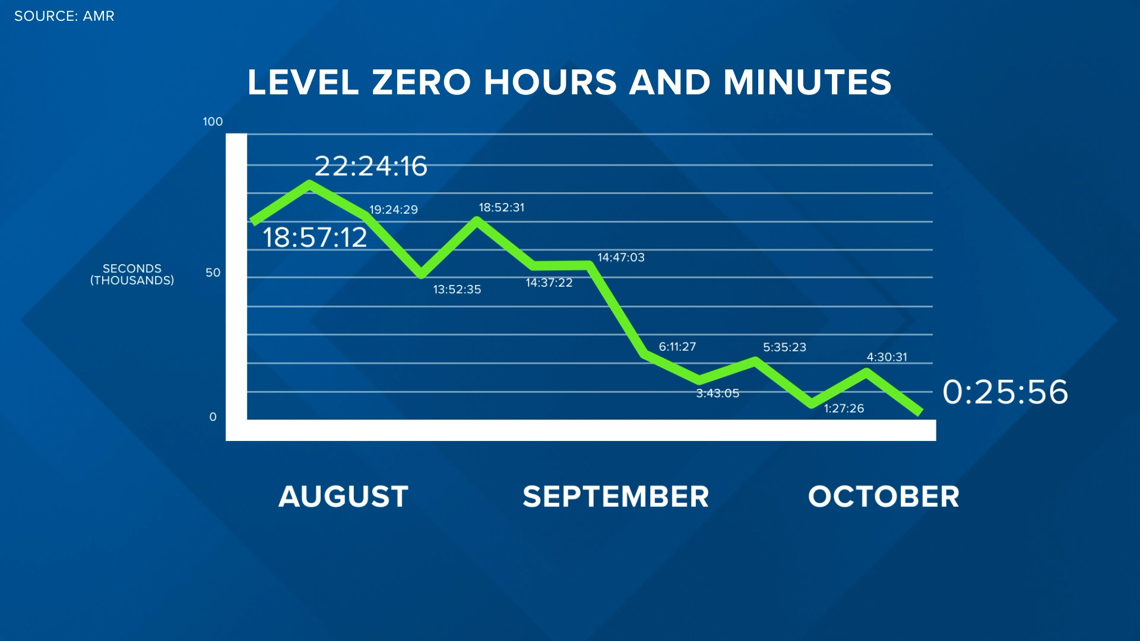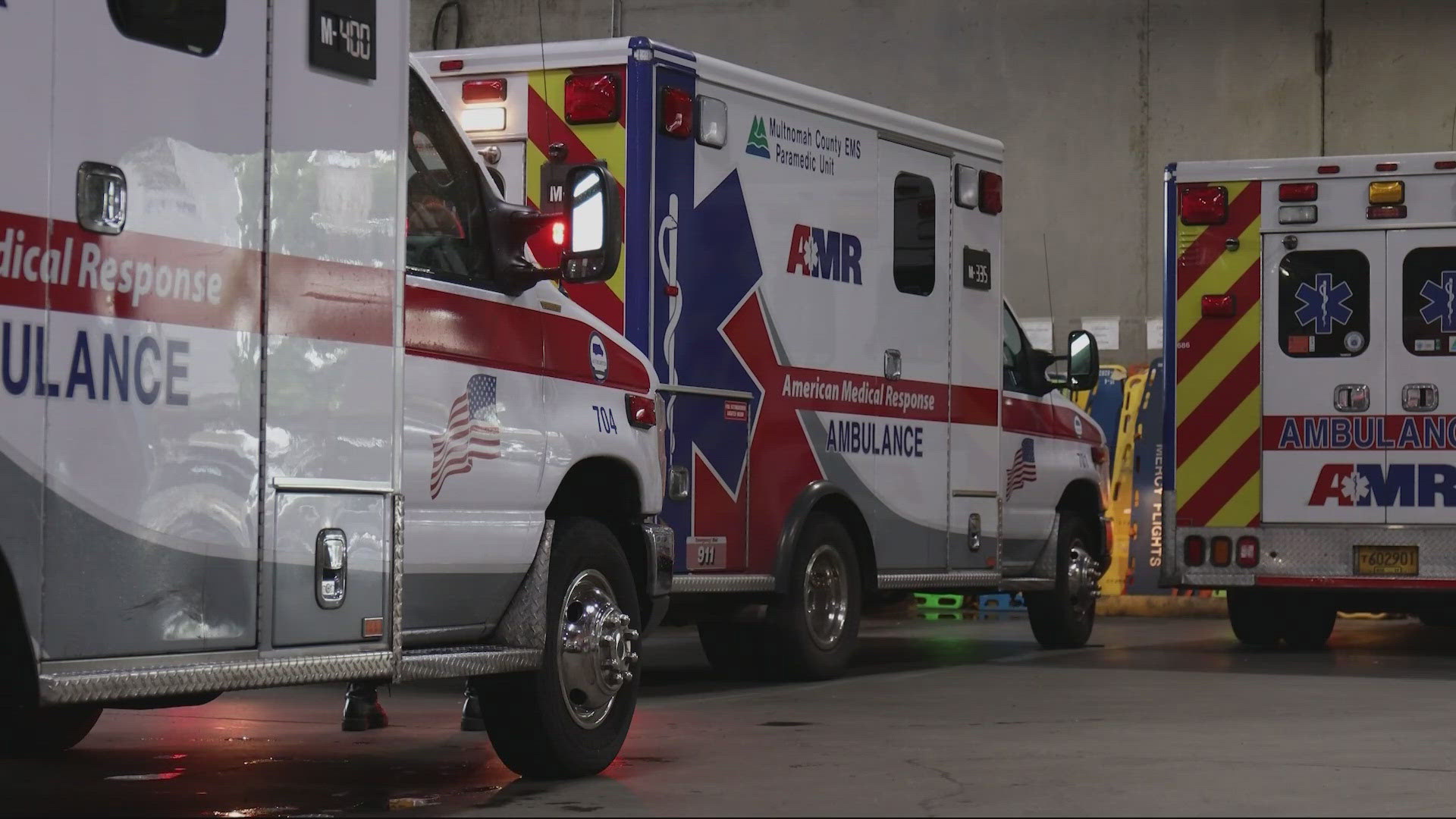PORTLAND, Ore. — AMR ambulance crews in Multnomah County are significantly more available and getting to emergencies faster, three months after county leaders compromised with the company to allow an ambulance staffing model change.
In a briefing Thursday, Multnomah County commissioners seemed happy to allow AMR to continue operating a hybrid model of one paramedic and one EMT on some of its ambulances. The prior model required two paramedics per ambulance, which the company had said was difficult to follow because paramedics require more training and are harder to find and hire.
AMR has yet to meet county benchmarks for response time compliance, but the company shared improving metrics.
"This is incredibly encouraging data and progress," said Jesse Beason, Multnomah County commissioner.
Since March of 2022, AMR Multnomah County ambulances have frequently arrived late to emergencies, per county standards.
On thousands of occasions, there were zero ambulances available to respond to an emergency call when someone called 911 — known as "Level Zero" incidents.
For two and a half years, Multnomah County and AMR disagreed on how to respond to a shortage of paramedics, blaming each other for the dangerous conditions. With a compromise now in place, that mood has shifted.
"It’s nice to also feel the tone and tenor change on this issue and to be good partners moving forward," Beason said.
AMR shared data on its improving response times and ambulance staffing totals with commissioners. Most significantly, AMR reported drastic improvements in its Level Zero data.
At the start of August, AMR averaged about 20 hours per week at Level Zero. That figure has dropped dramatically since the implementation of the new hybrid staffing model and hiring of more EMTs.
For the week of October 20 through October 26, AMR reported 26 minutes at Level Zero.


"We believe this is a harbinger of great things to come with our other compliance metrics, and more importantly, the citizens of Multnomah County will have the service they have come to expect from AMR over the last three decades," said Andrew Cherry, AMR Multnomah County operations manager.
AMR has yet to reach full compliance with county requirements, such as getting to 90% of emergency 911 calls in the urban areas of the county within 8 minutes, but county health officer Dr. Richard Bruno said the data is "trending in the right direction."
Commissioner Lori Stegmann asked AMR leadership when they would reach full compliance.
"We’ve gone 90 days, we’re trending in the right direction, but it’s 90 days, I’m not sure what the magic number is," Stegmann asked.
Rob McDonald, regional director for AMR, praised his company's improvements since August, saying they're on track for compliance.
"For us, this has worked a lot better than we anticipated.” McDonald said. "All the data and trends indicate it isn’t going to be 12 months or 24 months, we’re talking a matter of months (or) weeks."
There are also concerns with how AMR has improved its response times and metrics. Teamsters Local 223, the union that represents AMR paramedics and EMTs, wrote a letter to the county saying newly hired EMTs "are coming in with gaps" and "lack the quality in their training."
Aaron Monnig, the county's health officer operations manager, recognized the frustration.
"I'm not sure I’m surprised at seeing that concern at this point either, they were under a tight timeframe to hire a very large number of people, had to expect we’d see issues," he said. "As they become more fully staffed we’ll probably see that be addressed."
Multnomah County previously agreed to potentially forgive roughly $7 million in fines for noncompliance if AMR improved to meet county standards. County leaders said they want to meet at least quarterly moving forward to check on AMR's progress.

